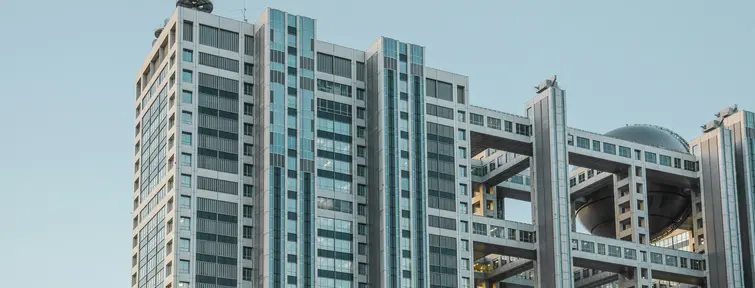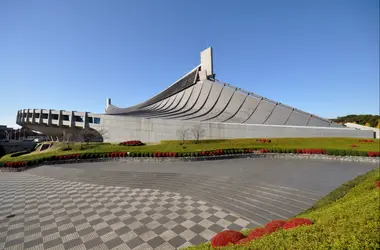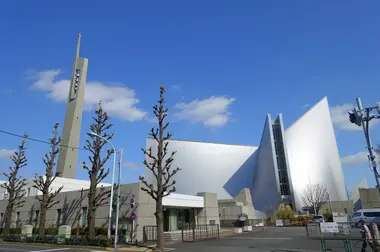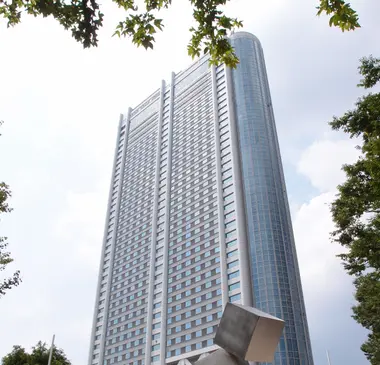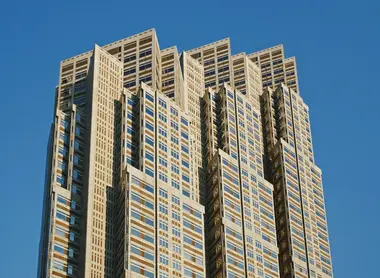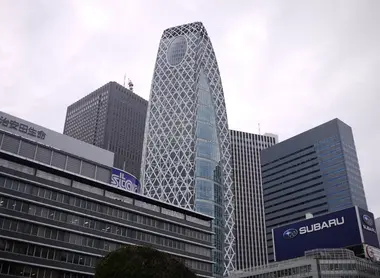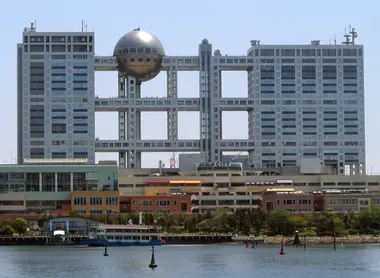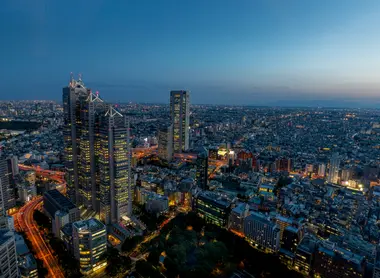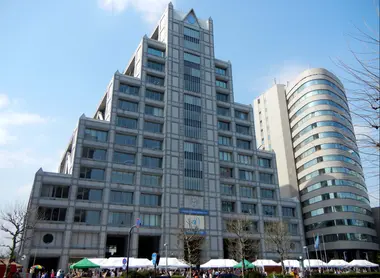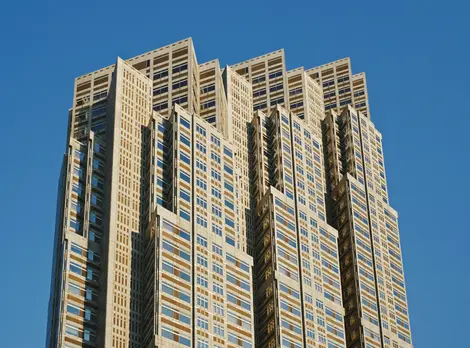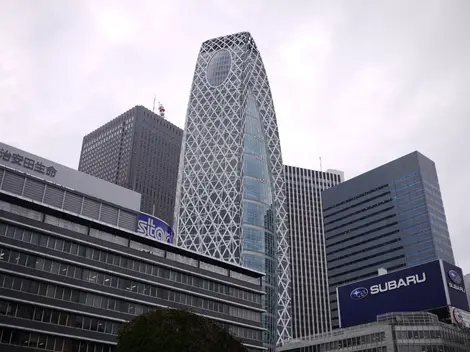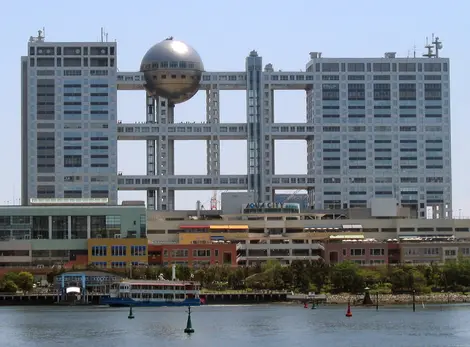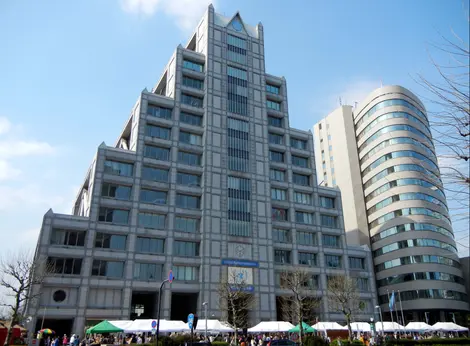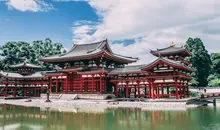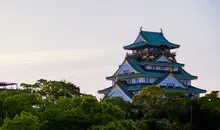Kenzo Tange, l'architecte qui a façonné l'architecture moderne japonaise
- Publié le : 24/06/2024
- Par : Japan Experience
- Youtube
La remarquable carrière de Kenzo Tange, qui s'étend sur plus d'un demi-siècle, a laissé une marque indélébile sur le monde de l'architecture et de l'urbanisme.
Kenzo Tange (丹下 健三) est largement considéré comme l'un des architectes japonais les plus influents et les plus honorés du XXe siècle. Né en 1913 à Osaka et élevé dans la petite ville d'Imabari sur l'île de Shikoku, Tange a mené une carrière qui s'est étendue sur la seconde moitié des années 1900, laissant une marque indélébile sur le paysage architectural du Japon et du monde. Enseignant, écrivain, architecte et urbaniste, Tange est vénéré non seulement pour ses propres travaux révolutionnaires, mais aussi pour l'influence profonde qu'il a exercée sur des générations de jeunes architectes qui ont étudié sous sa direction ou qui ont été inspirés par ses projets visionnaires. Il est décédé en 2005 à l'âge de 91 ans.
Début de la vie et influences
Le parcours de Kenzo Tange dans l'architecture a commencé par une fascination pour les œuvres du moderniste suisse Le Corbusier, qu'il a découvertes alors qu'il fréquentait le lycée d'Hiroshima. Inspiré par cette voie, Tange s'inscrit au département d'architecture de l'université de Tokyo en 1935. Il y étudie avec les architectes renommés Hideto Kishida et Shozo Uchida, perfectionnant ainsi ses compétences et développant son approche unique du design, qui définira plus tard sa carrière.
Après avoir obtenu son diplôme en 1938, Tange travaille brièvement dans le bureau d'architecture de Kunio Maekawa, qui avait auparavant étudié avec Le Corbusier à Paris. Cette expérience l'a familiarisé avec les principes de l'architecture moderniste et a renforcé son admiration pour l'architecte français pionnier. Cependant, avec l'éclatement de la Seconde Guerre mondiale, Tange retourne à l'université de Tokyo pour poursuivre ses études supérieures, se plongeant dans les domaines de l'urbanisme et de la structure des villes.
Principaux projets de l'après-guerre qui ont établi la réputation de Tange
Au lendemain de la Seconde Guerre mondiale, le Japon s'est trouvé confronté à la tâche monumentale de reconstruire ses villes dévastées par la guerre. Kenzo Tange s'est imposé comme une figure clé de cet effort de reconstruction, notamment grâce à son implication dans le projet du parc commémoratif de la paix d'Hiroshima. En remportant le concours de conception en 1949, Tange a créé un puissant symbole de paix et de souvenir qui met en évidence sa capacité à combiner les principes modernistes avec l'esthétique japonaise traditionnelle. La pièce maîtresse du parc, le musée du mémorial de la paix d'Hiroshima, se caractérise par une structure surélevée soutenue par des piliers massifs, encadrant la vue sur le dôme de la bombe atomique et créant un mémorial poignant aux victimes du bombardement.
Le succès de Tange à Hiroshima l'a conduit à réaliser une série de projets de premier plan tout au long des années 1950, notamment le bâtiment du gouvernement métropolitain de Tokyo (1952), le bureau du gouvernement préfectoral de Kagawa (1958) et l'hôtel de ville de Kurashiki (1960). Ces œuvres ont consolidé la réputation de Tange en tant que maître de l'architecture moderne, mettant en avant son utilisation innovante du béton, de l'acier et du verre pour créer des espaces saisissants et fonctionnels répondant aux besoins de la société japonaise d'après-guerre.
Les œuvres emblématiques de l'architecture moderne de Tange dans les années 1960
À la fin des années 1950 et au début des années 1960, Kenzo Tange a joué un rôle crucial dans le développement du mouvement métaboliste. Il s'agissait d'un groupe de jeunes architectes et designers japonais qui cherchaient à créer une nouvelle architecture et un nouvel urbanisme capables de s'adapter et d'évoluer en réponse aux changements rapides de la société d'après-guerre. Tange a servi de mentor et d'inspiration à de nombreuses figures clés du mouvement, dont Kisho Kurokawa, Fumihiko Maki et Arata Isozaki.
Les années 1960 ont marqué un tournant dans la carrière de Kenzo Tange, qui a créé certaines de ses œuvres les plus emblématiques et les plus célèbres. Le gymnase national Yoyogi, conçu pour les Jeux olympiques de Tokyo en 1964, a stupéfié le monde avec ses toits courbes et dynamiques et son design asymétrique. L'intégration magistrale par Tange d'éléments architecturaux japonais traditionnels avec une ingénierie et des matériaux de pointe lui a valu une reconnaissance internationale et a cimenté son statut de figure de proue de l'architecture moderne.
Une autre œuvre notable de cette période est la cathédrale Sainte-Marie de Tokyo (1964), une interprétation audacieuse et moderniste de la cathédrale gothique traditionnelle. Avec ses toits en acier inoxydable et son plan cruciforme, la cathédrale illustre la capacité de Tange à réinterpréter les formes traditionnelles dans une optique contemporaine, en créant des espaces à la fois spirituels et innovants sur le plan architectural.
Les visions urbanistiques influentes de Tange
Parallèlement à ses projets architecturaux, Kenzo Tange a apporté d'importantes contributions au domaine de l'urbanisme. Sa thèse de doctorat de 1960, "Spatial Structure in a Large City" (Structure spatiale dans une grande ville), explore la relation entre la structure urbaine et le mouvement des personnes dans les villes. Cette recherche a jeté les bases de son "Plan pour Tokyo 1960" visionnaire, une proposition radicale visant à réorganiser et à agrandir la capitale japonaise pour répondre à la croissance rapide de sa population.
Le plan de Tange prévoyait une ville linéaire s'étendant sur la baie de Tokyo, avec une série de modules interconnectés abritant des bureaux, des bâtiments gouvernementaux et des zones résidentielles, tous reliés par un réseau de transport efficace. Bien qu'il n'ait jamais été réalisé, le plan a reçu une attention internationale pour sa vision audacieuse et futuriste et pour son approche innovante des défis posés par la croissance urbaine et la congestion.
Le mouvement métaboliste et le rôle de Tange
À la fin des années 1950 et au début des années 1960, Kenzo Tange a joué un rôle crucial dans le développement du mouvement métaboliste, un groupe de jeunes architectes et designers japonais qui cherchaient à créer une nouvelle architecture et un nouvel urbanisme capables de s'adapter et d'évoluer en réponse aux changements rapides de la société d'après-guerre. Tange a servi de mentor et d'inspiration à de nombreuses figures clés du mouvement, dont Kisho Kurokawa, Fumihiko Maki et Arata Isozaki.
Les métabolistes se sont inspirés des concepts biologiques de croissance et de régénération, envisageant les villes comme des organismes dynamiques et vivants, capables de croître et de changer au fil du temps. Les travaux de Tange, tels que l'hôtel Tokyo Dome et le Yamanashi Broadcasting and Press Center, incarnent nombre de ces idées, avec leurs structures modulaires et extensibles et l'accent mis sur la flexibilité et l'adaptabilité.
Les projets internationaux et la reconnaissance de Tange
La réputation de Kenzo Tange grandit en même temps que l'ampleur de ses projets. Au cours des années 1960 et 1970, il conçoit des bâtiments dans des pays du monde entier, notamment des ambassades, des universités et des centres culturels en Arabie saoudite, au Koweït, à Singapour, en Italie et aux États-Unis. Son travail international a mis en évidence sa capacité à adapter ses principes modernistes à divers contextes culturels tout en conservant son style et sa vision distinctifs.
Les contributions de Tange à l'architecture ont été largement reconnues et il a reçu de nombreuses récompenses prestigieuses tout au long de sa carrière. En 1987, il est devenu le premier architecte japonais à recevoir le prix d'architecture Pritzker, souvent appelé le "prix Nobel de l'architecture" La citation du jury a fait l'éloge de l'œuvre de Tange pour son "influence importante et durable", notant que ses projets "ont cherché à combiner le meilleur de l'architecture japonaise traditionnelle avec le meilleur de l'architecture occidentale moderne et à faire évoluer une sorte de monumentalité moderne dans le béton et le verre".
